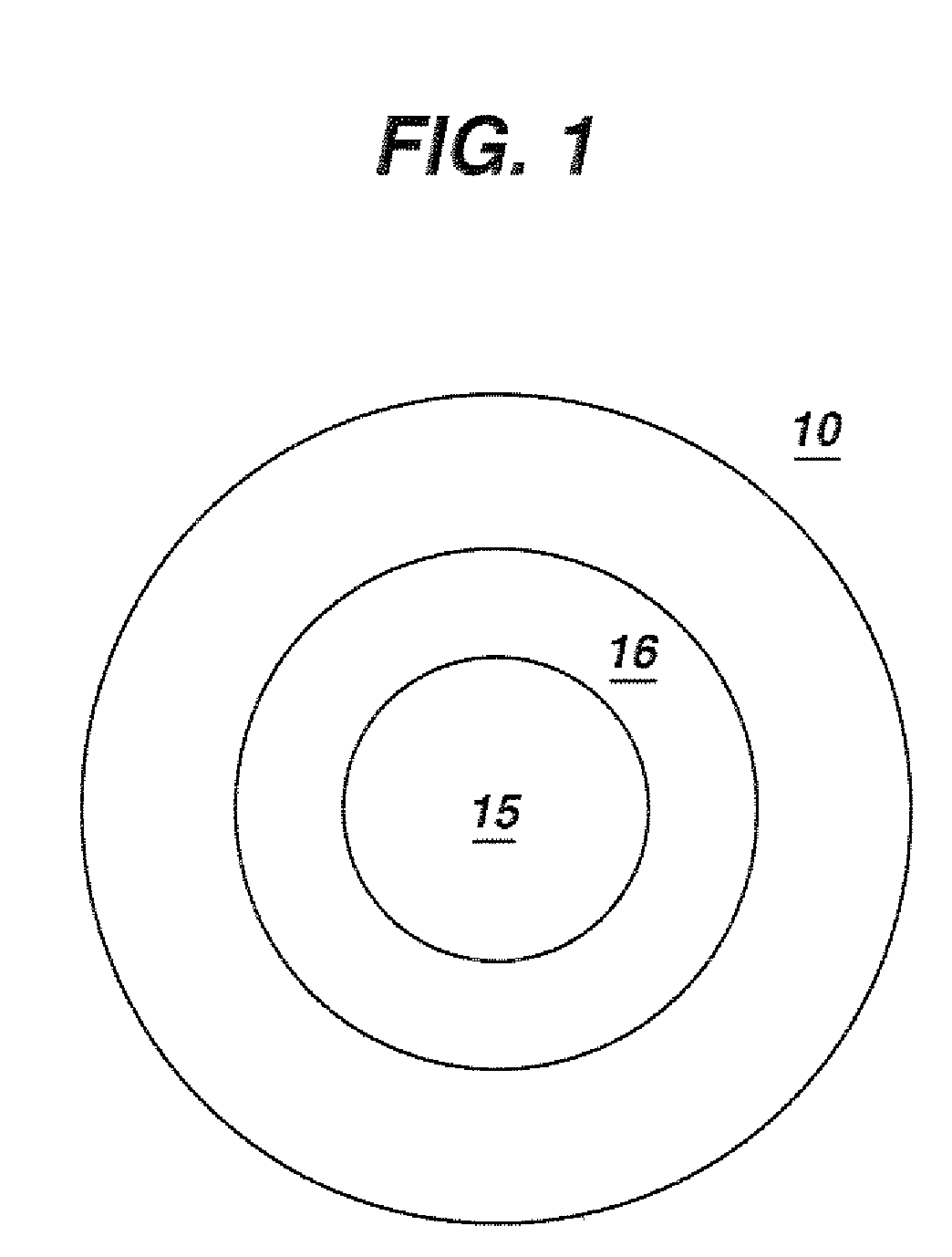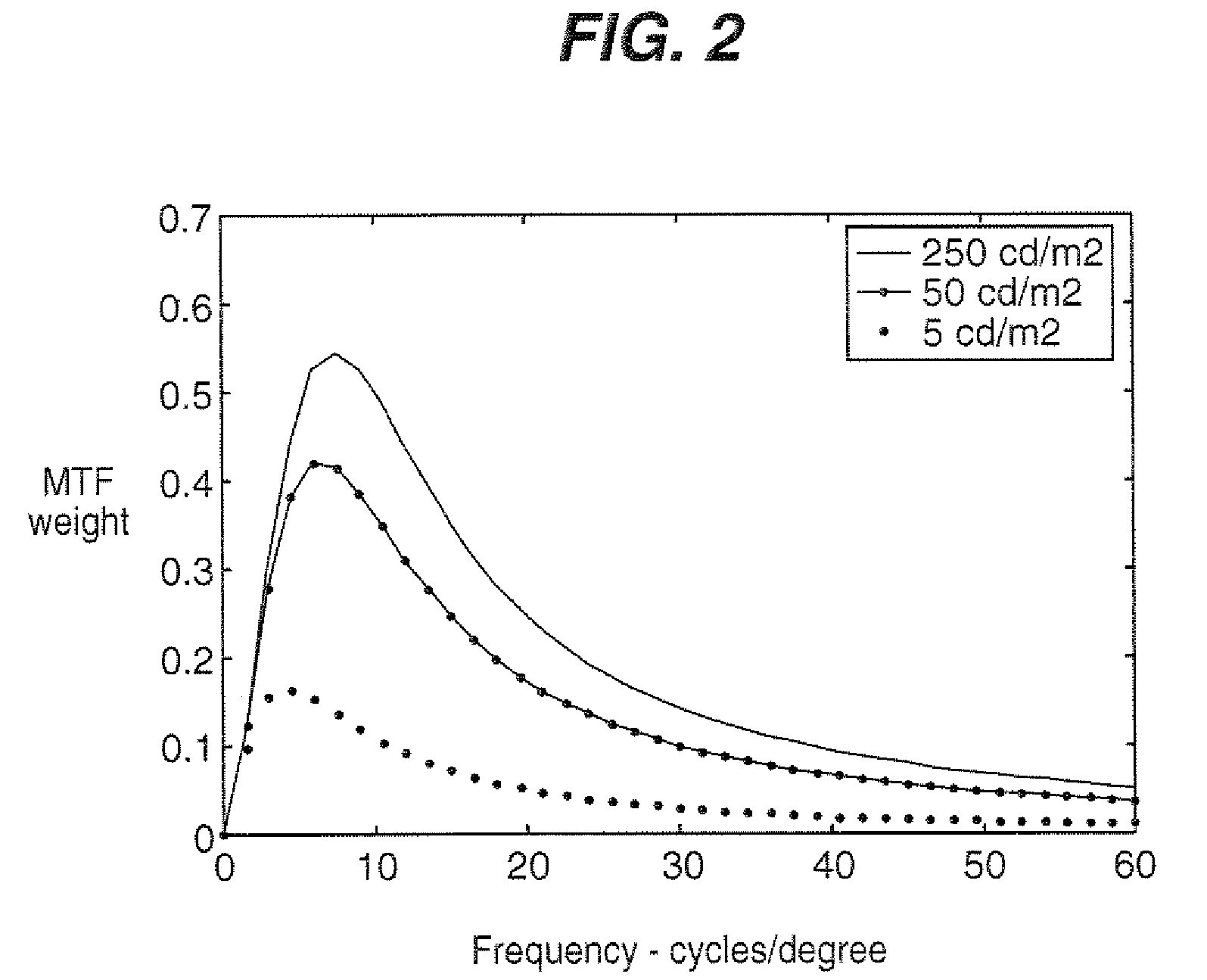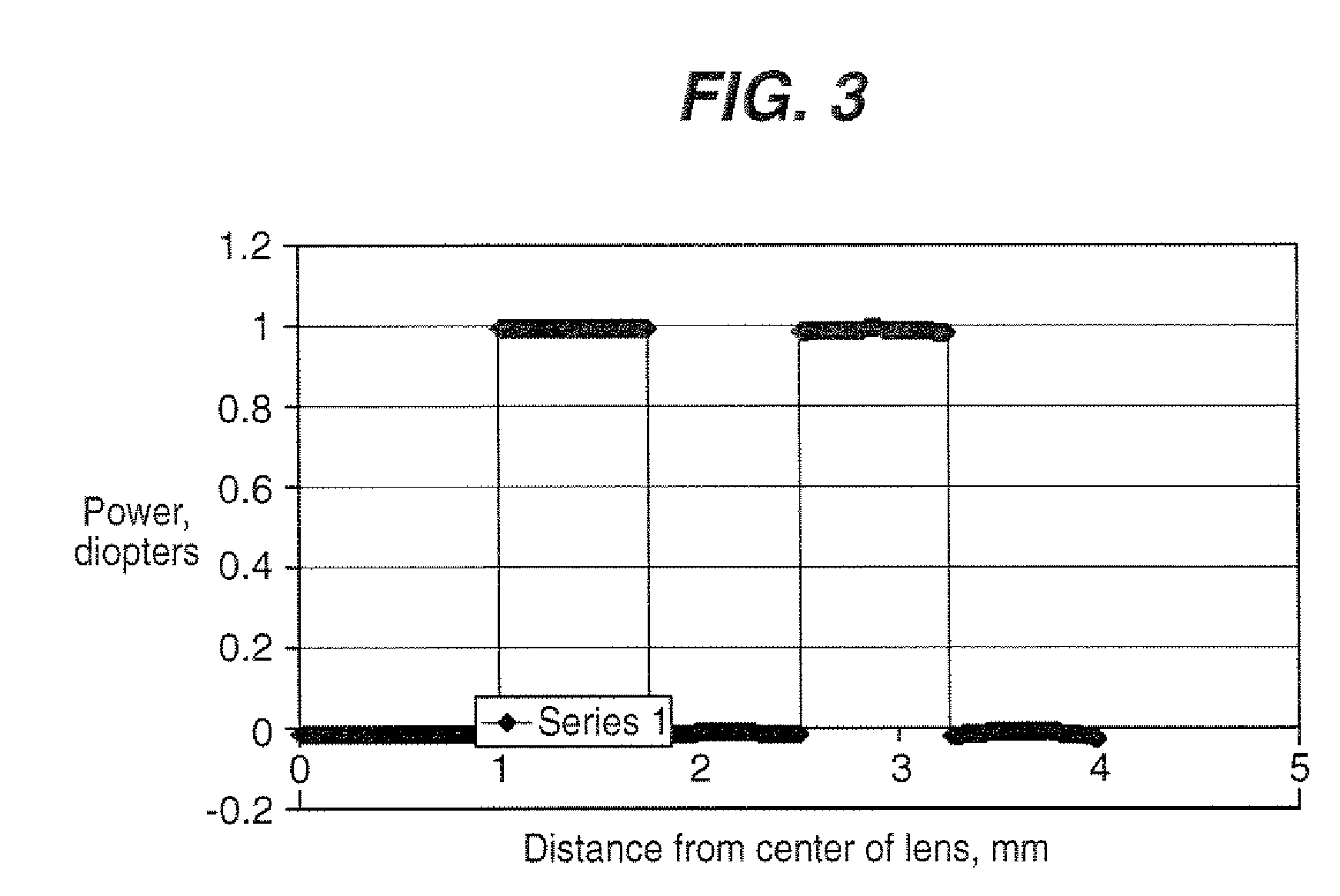Method of designing multifocal contact lenses
a multi-focal, contact lens technology, applied in the field of multi-focal contact lens pairs, can solve the problems of bending the natural lens, less eye space,
- Summary
- Abstract
- Description
- Claims
- Application Information
AI Technical Summary
Benefits of technology
Problems solved by technology
Method used
Image
Examples
example 1
[0032]A lens design was provided for a dominant eye, which design had five concentric zones located on the front surface of the lens. The power of the centermost zone, and every other zone moving from the center of the lens to the periphery, correspond to the nominal distance power of the lens. The remaining zones correspond to the nominal near power of the lens. The power profile for this lens is shown in FIG. 3. The NCSF shown in FIG. 2 was selected and the integration limits were chosen to be min=0 cpd and max=60 cpd. Using clinically measured VA data from three designs; a single vision design, a continuous asphere multifocal, and a ring type bifocal the coefficients of Equation II were determined to allow for the visual performance prediction model to be used to optimize the design performance. Being a lens for the dominant eye, the on-eye performance requirements for this particular design was for a lens that had very little compromise for distance objects, but that provided so...
example 2
[0033]A lens design was provided for a non-dominant eye, which design has four zones located on the front surface of the lens. The centermost and every other zone moving from the center to the periphery of the lens corresponded to the nominal near power of the lens and the remaining zones to the distance power as is depicted in FIG. 6. The NCSF used was weighted as shown in FIG. 7 with the integration limits of Equation I set to min=0 cpd and max=12 cpd. Using measured visual acuity data from three designs; a single vision design, a continuous asphere multifocal, and a ring type bifocal to develop correlation, Equation II becomes:
VA=−11+2.9*log 10(WAOTF)−0.141*log 10(WAOTF)2
Being for the non-dominant eye the performance of the this lens on-eye needs to have improved near performance and can allow a larger distance performance tradeoff than a design intended for the dominate eye. The design was optimized to provide the through-focus visual performance predicted in FIG. 9 by changing...
PUM
 Login to View More
Login to View More Abstract
Description
Claims
Application Information
 Login to View More
Login to View More - R&D
- Intellectual Property
- Life Sciences
- Materials
- Tech Scout
- Unparalleled Data Quality
- Higher Quality Content
- 60% Fewer Hallucinations
Browse by: Latest US Patents, China's latest patents, Technical Efficacy Thesaurus, Application Domain, Technology Topic, Popular Technical Reports.
© 2025 PatSnap. All rights reserved.Legal|Privacy policy|Modern Slavery Act Transparency Statement|Sitemap|About US| Contact US: help@patsnap.com



